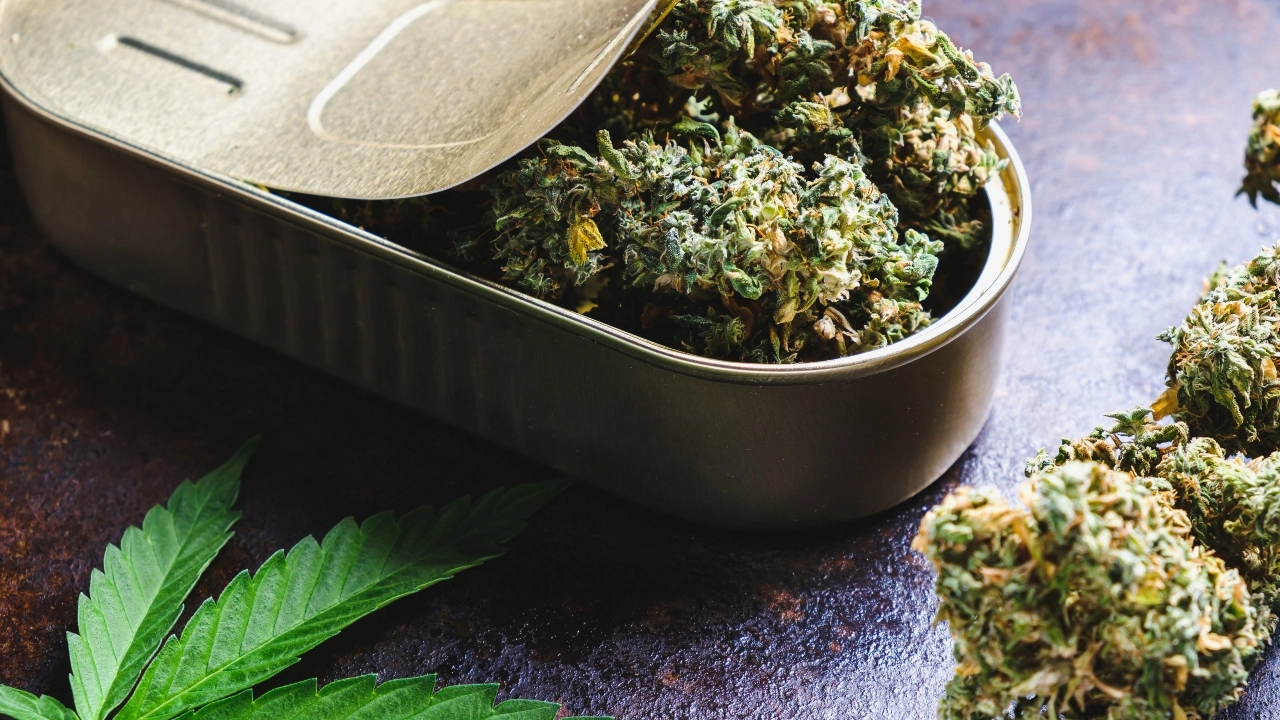:format(webp))
Weed in Tuna Cans
As avid stoners, we’ve all encountered weed stuffed in a tuna can once or twice in our lives
and it’s a form of packaging marijuana that has largely disappeared since legalization in Canada. So, where did tuna can cannabis come from and what was its purpose?

Upfront and abruptly, marijuana was put in tuna cans because it was being smuggled and the deceptive nature of the packaging allowed smugglers to transport cannabis discreetly.
One of the main reasons behind using tuna cans for cannabis is their ability to hide distinct odors. This is why “tuna can kush” became so popular and widely known, because the smellier the herbs, the more likely it would be stored in a can. Not only does tuna fish have a strong smell that can easily overpower or blend into the scent of marijuana, but the cans themselves are proficient in keeping odors trapped inside. I mean think about it: there’s a reason why you can go to the grocery store and the entire building doesn’t reek like cat food. The use of tuna cans as a concealment method for marijuana smuggling has been documented in various cases over the years, and they’ve proven to reduce the risk of detection during transportation.

Furthermore, tuna cans are commonly found in grocery stores and households, making them a convenient choice for smugglers. This accessibility allowed them to blend in with legitimate shipments and avoid arousing suspicion. Smugglers would often empty out the tuna from the cans, carefully package the marijuana inside, and then reseal them to maintain their original appearance. This method helped create an illusion of legality and made it less likely for authorities to inspect or question the contents of the cans. It is worth noting that while tuna cans have been used as a popular method for smuggling chronic in the past, law enforcement agencies have become increasingly aware of this tactic.

It’s not only rumored, but widely accepted, that tuna can buds originated in British Columbia, Canada.
BC has gained a reputation as a major hub for cannabis cultivation and production. The province's favorable climate, with its long growing season and abundant natural resources, makes it an ideal location for cultivating high-quality cannabis. As a result, British Columbia has become known as the "Bud Capital of Canada" or the "Napa Valley of Weed." The illegal cannabis market in British Columbia has also been thriving for decades, even before the legalization of recreational marijuana in Canada in 2018. The province has a long history of underground cannabis cultivation, with many small-scale growers operating in remote areas or hidden within residential properties. Due to its location, the province's illicit cannabis industry has also been associated with organized crime groups involved in drug trafficking. It should be said that while British Columbia has a significant presence in the illegal cannabis market, it also has a thriving legal cannabis industry following the legalization of recreational marijuana. Licensed producers operate under strict regulations and contribute to the province's economy through job creation and tax revenue.
:format(webp))